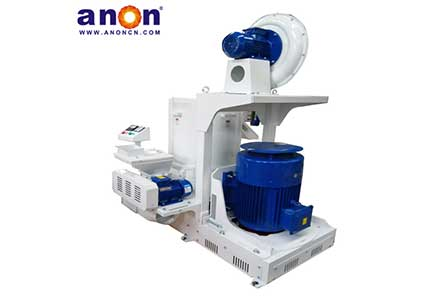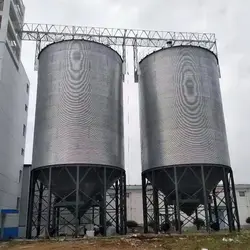Introduction
At present, the consumption of rice is on the rise, with more and more people incorporating it into their diets. Do you want to know how to grow rice? Do you want to know how rice reaches your table?
In this article, we will study how to grow rice. You will also know the processing process of rice. This article draws on the wisdom accumulated by generations of experienced farmers.
Are you eager to learn more? Let’s dive right in!

5 Types of Rice
Before you know how to grow rice, it is essential to grasp the primary categories of rice.
Long-grain rice: Slender and typically 4 to 5 times longer than its width, it boasts high protein and starch content. Basmati and Jasmine are notable varieties.
Medium-grain rice: Roughly 2-3 times longer than its width, with a rounder shape, yielding a thicker texture when cooked. Arborio and Calrose are prominent examples.
Short-grain rice: Known as glutinous rice, it has round grains and higher starch content, ideal for dishes like Zongzi and rice cakes.
Brown rice: Retains its husk, resulting in a yellow color and higher fiber and nutrient content compared to white rice.
White rice: Processed through cleaning, milling, and polishing, resulting in its signature white appearance.
How to Grow Rice?
There are many countries in the world that consume rice. There are also many types of rice. Seeing this, do you become more curious about how to grow rice? Let’s get started!

Preparing the Land before Grow Rice
Before starting to plant rice, you need to know the suitable growth environment for the rice. Rice grows in slightly acidic and sticky soil, requiring ample water sources and good drainage. Additionally, it flourishes in sunny and warm environments.
Once you’ve assessed these factors,you need to consider whether your location is suitable for growing rice. If it is, please continue to learn how to grow rice.
Selecting the Seed before Grow Rice
Now, you can start selecting seeds and choose different types of seeds based on the rice you want to grow.
Seeds can be obtained from horticultural shops, nurseries, or local farmers. Purchase the desired quantity according to your needs. After acquiring the seeds, soak them in water for 24-36 hours before sowing.
If you’ve reached this point, there is only one final step left on how to grow rice!
Flooding after Grow Rice
The last step in growing rice is to sow the soaked seeds, which can be done manually or using a seeder for faster results. Once sown, water the planting area to keep the seeds moist.
How to grow rice has come to an end. You now need to wait for the seeds to grow, mature, and harvest.
Time for Grow Rice
After reading this, you should now have a good grasp of how to grow rice. It typically takes about 105-150 days for rice to grow from sowing to harvesting. During this time, patience is essential as you wait for the rice to mature. Although this process may seem lengthy, the rewards will soon become apparent.
Harvest Rice after Grow Rice
Learning how to grow rice is important. However, the most enjoyable moment is the harvest. When your rice plants reach a height of 3-4 feet or higher and turn golden, it’s time to harvest.
You can use a sickle for manual harvesting or a harvester for mechanized harvesting. The harvester can also perform threshing operations, reducing labor intensity and enhancing efficiency.

The Process after Rice Harvest
You have learned how to grow rice and harvest, and the harvested rice will undergo a process to become rice that we can purchase in stores.
Once cooked, it becomes a delicacy served on our dining tables. The primary processing steps include:
Cleaning
During the rice harvesting process, straw, stones, and other impurities mix with the rice grains. To ensure only the grains are retained, the rice needs cleaning.
The commonly used rice cleaning equipment works by rotating or vibrating. Due to the differing sizes and weights of rice grains and impurities, the rice grains separate from the impurity. After multiple screenings, clean rice grains are obtained.
Husking
After obtaining clean rice, it undergoes a dehulling treatment to remove the husk. You can choose to manually remove it. But, in today’s technological world, rice factories use rice huskers. These machines remove the outer shell of rice by squeezing and tearing it apart.
Earlier, when learning how to grow rice, various types of rice were mentioned. Following this step, the resulting product is brown rice.
Winnowing
Following hulling, winnowing is conducted to separate husk fragments from the rice grains. To further separate the rice from the husks, a paddy separator is commonly utilized. This separator uses vibration to segregate the husks and rice based on their distinct densities.
Milling
If you prefer brown rice, this step is unnecessary as it is aimed at producing white rice. Nowadays, there are numerous automatic rice milling machines available. These machines employ high-speed grinding action to remove the yellow rice bran from the surface of the rice grains, resulting in white rice.
Sorting
During the sowing process, different types of seeds may mix together. This means that not all rice is white. After milling the rice, you can use a rice color sorter. It is a very intelligent machine. It can recognize rice of different colors and control the blowing valve to separate the rice according to the color. Similarly, a color classifier can also be used to classify rice by color.
Polishing
Polishing rice is not necessary, it is to make the rice look better. The polishing machine removes bran powder from the surface of the rice grains. Additionally, it causes the starch on the grains’ surface to gelatinize, creating a smooth and shiny appearance.

Grading
After milling and polishing, rice will produce some broken or incomplete grains. At this point, the rice grader should be on the stage. Due to the different sizes of rice grains, the rice grader easily sorts the rice according to different sizes through screening.
Bagging
All the steps have been finished, and the last one is packaging. The bagging machine can fill bags with rice and sew them shut based on various weights. The packaged rice is ready for transport and sale.
Conclusion
Rice has become a common food on dining tables worldwide. In this article, you have learned about how to grow rice and the post-harvest processing steps.
For further knowledge or to acquire related equipment, consider visiting ANON, a trusted agricultural expert!




